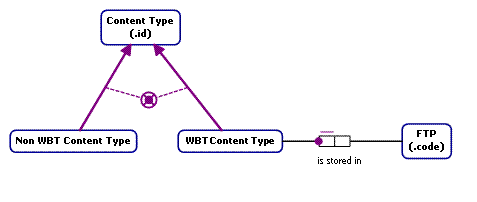I have attached what I believe may be a better way to represent what your diagram appears to be attempting to represent, using subtypes. It carries these assumptions:
All Content types either are WBT or are NOT WBT.
All WBT Content types are stored in exactly one FTP
An FTP may store any number of WBT content types.
[Edit] This is still technically incorrect, as there is (in the model) no way to determine if a given Content type is or is not a WBT. To correctly use subtypes, you need to have a subtype rule. In this instance, a simple unary fact on Content type, 'is WBT', and some text for the subtype rule would be enough.

![]()
